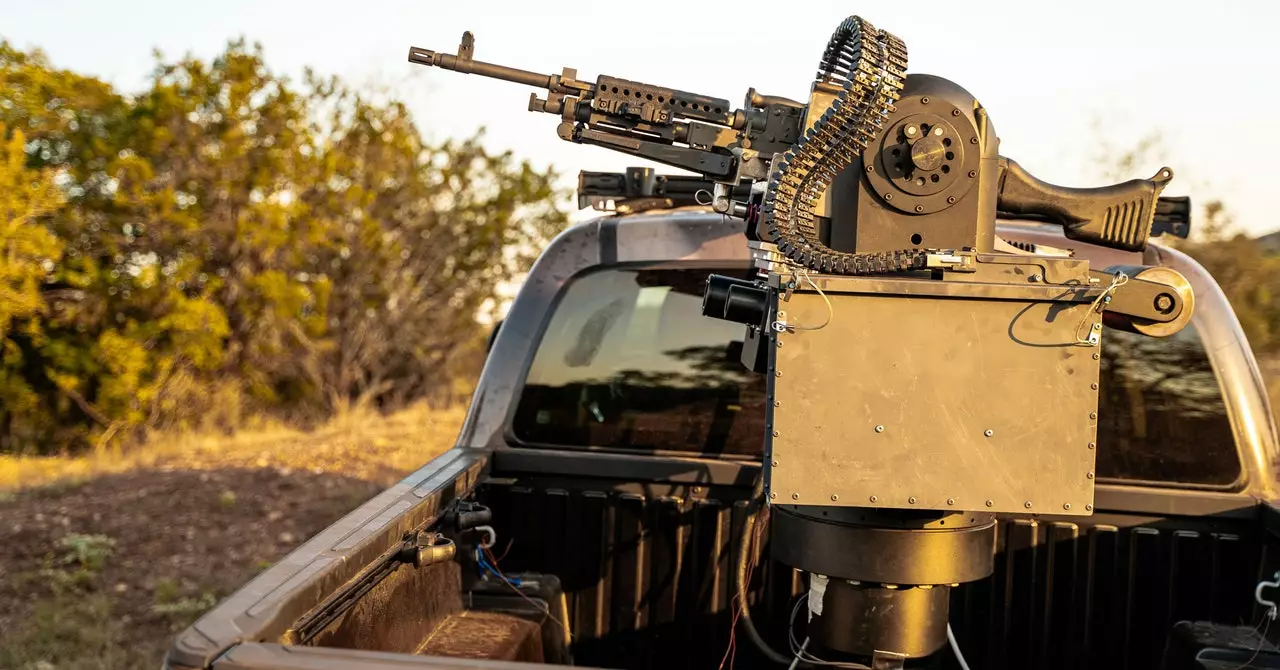In recent years, the battlefield has been transformed by the emergence of affordable and effective drone technology, posing formidable risks to military personnel. Overhead drones operated by adversaries have become an omnipresent threat, often complicating the operational landscape for American troops deployed in conflict zones. These flying machines can surveil, disrupt, and even directly engage ground forces, which has pushed the U.S. military to urgently seek innovative solutions to safeguard its soldiers.
To counter this growing menace, the Pentagon has considered various approaches, including the development of advanced weaponry, investment in costly munitions, and exploration of futuristic directed energy systems. However, amidst these sophisticated endeavors, a surprisingly straightforward solution is on the horizon: the modernization of traditional firearms specifically designed to tackle drone threats. This adaptation aims to provide ground forces with enhanced capabilities against aerial adversaries.
At the forefront of this adaptive strategy is a groundbreaking weapon system known as the “Bullfrog.” Developed by the nascent defense contractor Allen Control Systems (ACS), this autonomous robotic gun represents a significant leap in the military’s capacity to neutralize drones effectively. At the recent Technology Readiness Experimentation (T-REX) event, the Bullfrog was put to the test, showcasing its ability to target and destroy unmanned aerial vehicles (UAVs) with remarkable accuracy.
Equipped with a 7.62-mm M240 machine gun, the Bullfrog features an advanced rotating turret integrated with sophisticated electro-optical sensors and proprietary artificial intelligence (AI) alongside computer vision technology. The design is aimed squarely at overcoming the challenges faced by traditional personnel armed with standard firearms. Reports indicate that when deployed, the Bullfrog has successfully intercepted and disabled small drones with only a few rounds fired, an impressive feat that underscores its potential utility in active military operations.
The Implications of Autonomous Weaponry
While the weaponry itself is noteworthy, the Bullfrog’s implications raise critical discussions about the increasing autonomy of military systems. If the Pentagon fully integrates this system into its arsenal, it could mark a pivotal moment in military history; the Bullfrog may become the first operational lethal autonomous weapon employed by U.S. forces, a milestone that would inevitably prompt ethical and strategic dialogues surrounding warfare and the implications of AI in combat scenarios.
The challenge of neutralizing quickly moving drones is not just a test of firepower but also a test of precision and technology. Traditional weapons may struggle in this domain, prompting military leaders to pursue diversified offensive capabilities. Vehicles like the Bullfrog propose a blend of human oversight and machine efficiency, theoretically increasing the chances of hitting fast-moving aerial targets while reducing collateral damage.
Recognizing the urgency of enhancing drone defense capabilities, the U.S. Army has begun introducing counter-drone measures into its training curriculum. This new emphasis aims to incorporate drone engagement strategies as a standard part of soldier preparedness, paralleling conventional marksmanship training.
Simultaneously, the military has explored other innovative technologies. From procuring unique munitions designed to disperse projectiles effectively against drone swarms to integrating electronic warfare systems capable of jamming incoming threats, these advancements showcase the multifaceted response being developed to address aerial vulnerabilities.
Under the guidance of leaders like ACS co-founder and CEO Steve Simoni, there is a consensus that the future of firearm efficacy lies not just in auxiliary accessories or enhanced soldier training. Smart, AI-driven solutions combined with advanced robotics may very well provide the key to refining target acquisition and tracking, delivering precision fire that human operators might otherwise lack.
As the military landscape continues to adapt to evolving threats, the innovation behind systems like the Bullfrog exemplifies a significant shift in counter-drone technologies. The marriage of conventional weaponry with advanced artificial intelligence illustrates a potential path forward—one that may define the future of combat if ethical paradigms and operational directives can evolve alongside technological advancements. For the U.S. military, it’s not just about keeping adversaries at bay but ensuring that soldiers remain protected in an increasingly perilous world dominated by aerial threats.


Leave a Reply